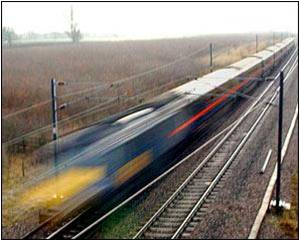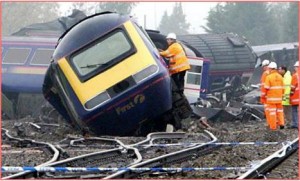 This concept can be applied to life, love, business, disease and health.
This concept can be applied to life, love, business, disease and health.
Energy directed in a certain way will allow the object to gain momentum over time. Like a runaway train, the mass will go faster and faster. The question is which direction is it headed? And if it’s headed in the wrong direction, what to do about it.
To start at a fundamental level, like a growing snowball, thoughts and problems gain momentum. Within about a minute, unfocused consciousness will start collecting one thought after the next and this is largely where anxieties stem from, leading into more complex thought patterns like obsession or compulsion. Unless you’re aware of what you’re thinking and the meanings you’re attaching to the thoughts, their effects may not be appropriate. Like worry leading to grumpiness, uncontrolled unhappiness, poor posture and shortness of breath.
The energy of thought may seem unnoticeable at first until it starts changing body chemistry. This takes time. Lots of time. An alteration in body chemistry will lead to a change in physical peptide structure, changing energy levels; make for poor metabolism or an inability to lose or gain weight; poor immune function and poor immune responses – hives would be a typical example.
Given enough time and momentum of the process, physical body structure will start to change, as long term exposure in stressed states to glucocorticoids (stress hormones) will lower immune function, lead to unfettered inflammation within the body, decrease general resilience to stress, reduce bone density, change the spine, break down muscle, cause insulin resistance, and over stimulate the nervous system (psychosis for instance – this is a bad thing).
 The first problem is most people don’t notice their problems are gaining momentum. And the second problem is the momentum of a system of a number of different problems together is cumulative and will be even greater, i.e. problems at home and work. Tony Robbins always said kill the monster under the bed while it’s small. Recognise, acknowledge, and discuss where you’re at in life, love, business, disease or health and start moving the train the other way because derailment is usually the only way people attempt to solve problems. Derailment is catastrophic. The runaway train is by this stage moving too fast, the momentum is too great, and the damage will be enormous. Listen to the police, people: The faster you go, the bigger the mess! That’s the cops, not the band.
The first problem is most people don’t notice their problems are gaining momentum. And the second problem is the momentum of a system of a number of different problems together is cumulative and will be even greater, i.e. problems at home and work. Tony Robbins always said kill the monster under the bed while it’s small. Recognise, acknowledge, and discuss where you’re at in life, love, business, disease or health and start moving the train the other way because derailment is usually the only way people attempt to solve problems. Derailment is catastrophic. The runaway train is by this stage moving too fast, the momentum is too great, and the damage will be enormous. Listen to the police, people: The faster you go, the bigger the mess! That’s the cops, not the band.
A patient typically has three stages of presentation:
- State of alarm. Suddenly becoming self aware, having a reaction to the issue, and choosing to take action or not. What is the appropriate action? Can I be bothered – it’s not that bad? “She’ll be right” in true Kiwi fashion. Will she? I don’t have time for this. Soldier on. Things will be better tomorrow or next week or next month.
- State of resistance. Recognising the problem but failing to do anything about it. Time passes, sometimes years. Momentum starts gaining. The monster grows. Occasionally the individual will even get a pay off from the process, throwing a piece of meat under the bed to feed the monster because their newfound state attracts attention or sympathetic love. The system, relationship, state of health or business breaks down.
- State of exhaustion. The train is now a runaway. Derailment solutions include drugs, surgery or divorce. Emotion is uncontrolled. Perceptions of reality are distorted and expectations are unrealistic. In other words, the train has been a runaway for years now, and the expectation to turn the situation around in a week or a month is ludicrous. The individual’s engine is running on the sniff of an oily rag and they’re exhausted. Energy and resources required to help themselves, let alone their loved ones around them, is at an all time low. Emotional content of the situation is in the lower echelons of fear, despair, insecurity, anger, jealousy or blame.
The wonderful thing about being human is that we have the ability to choose, and choose, and choose again (Kotze, 2009).
